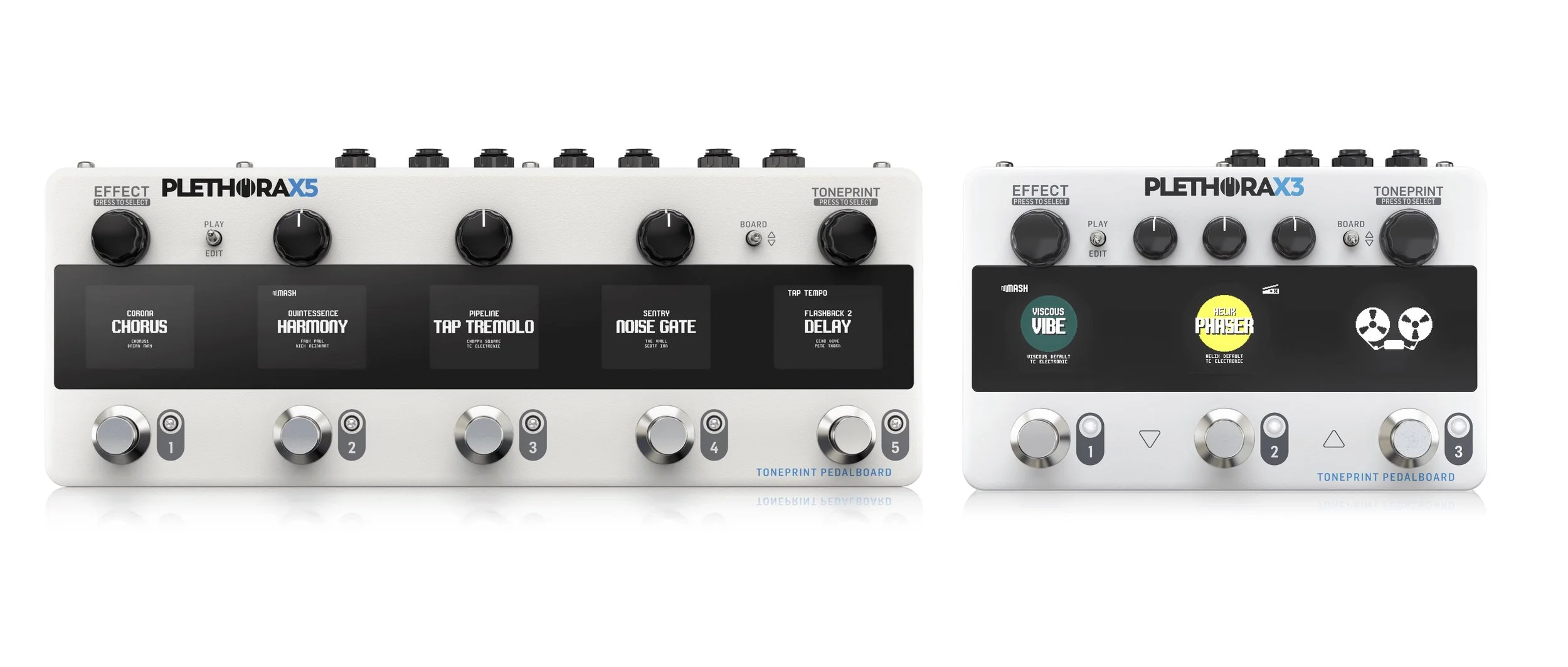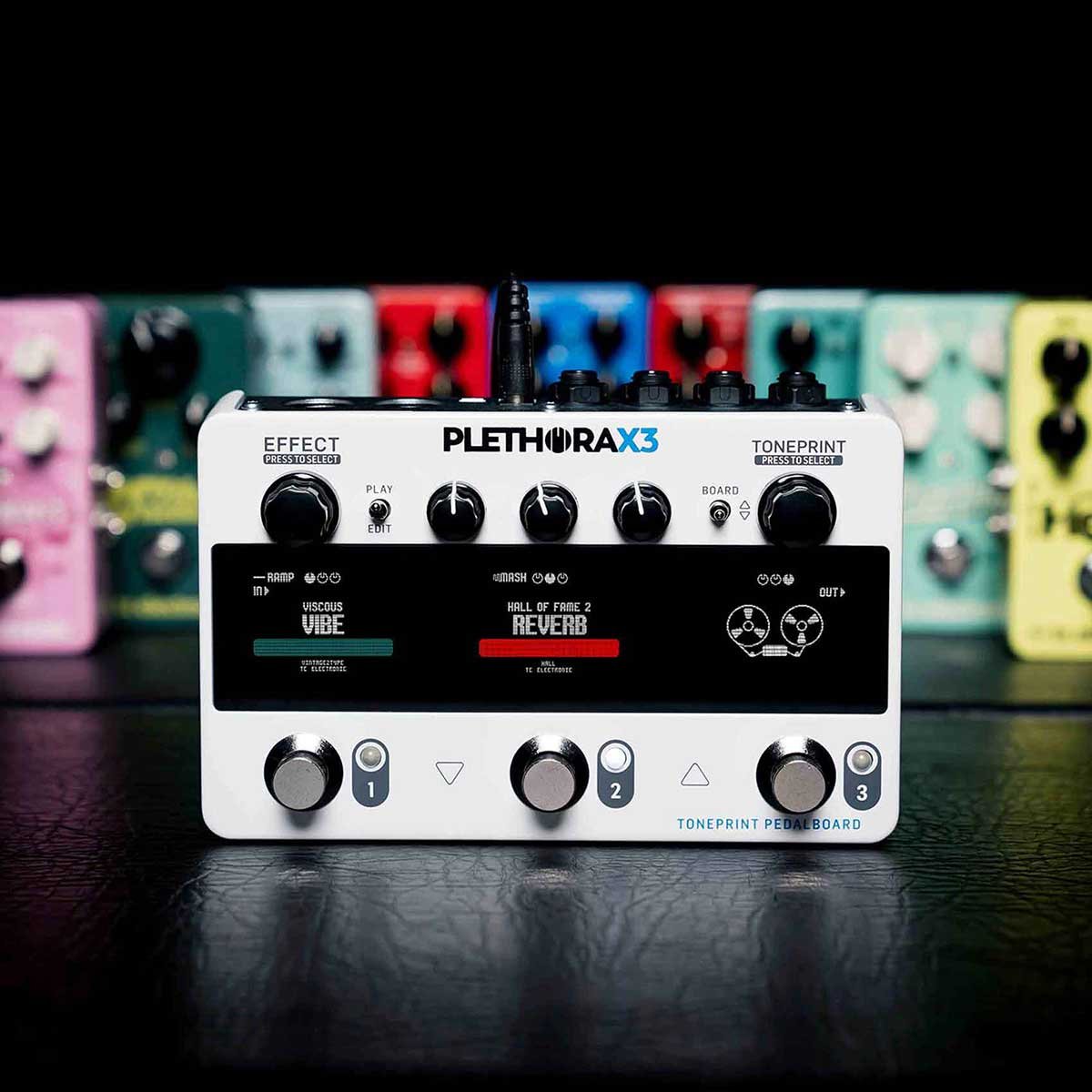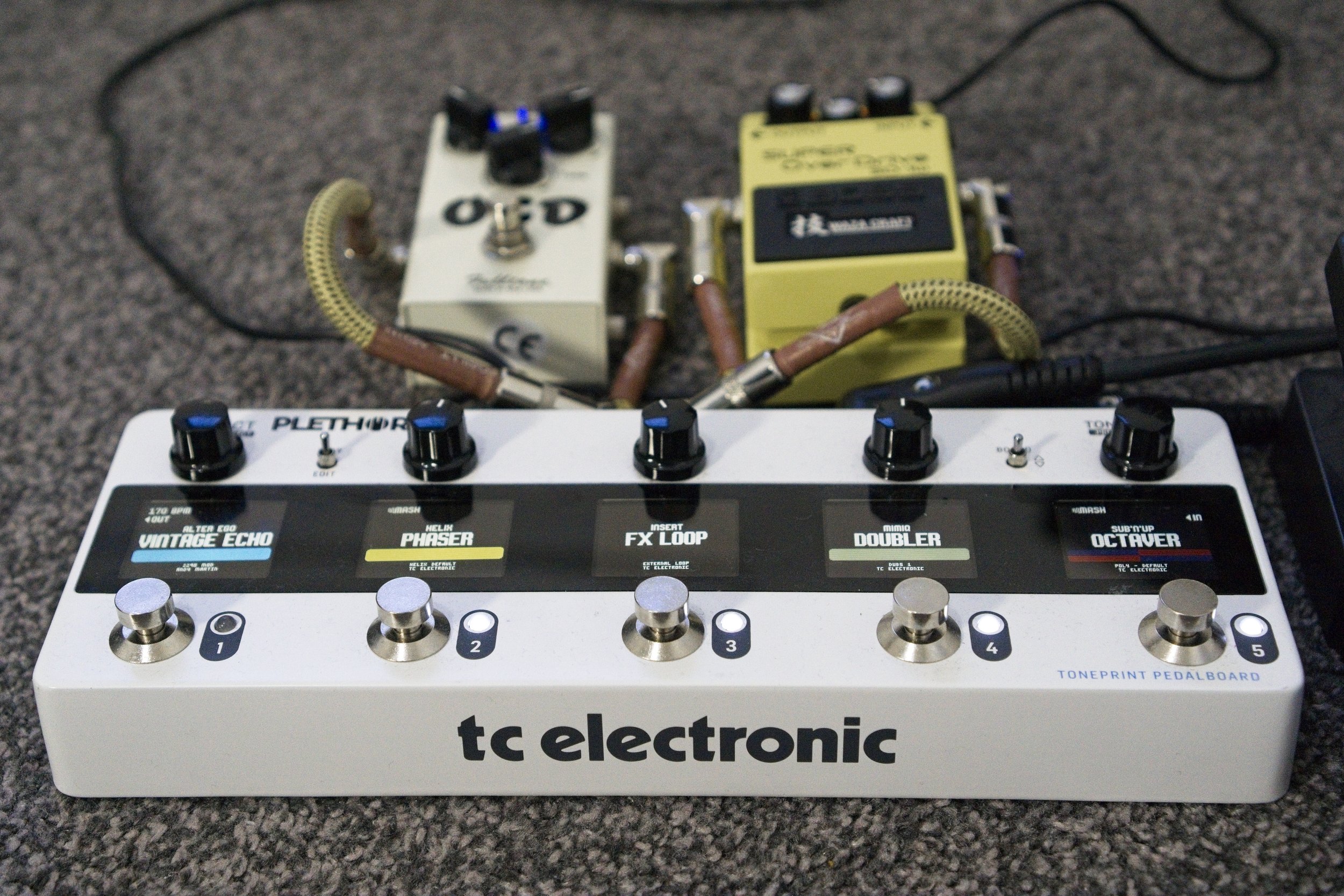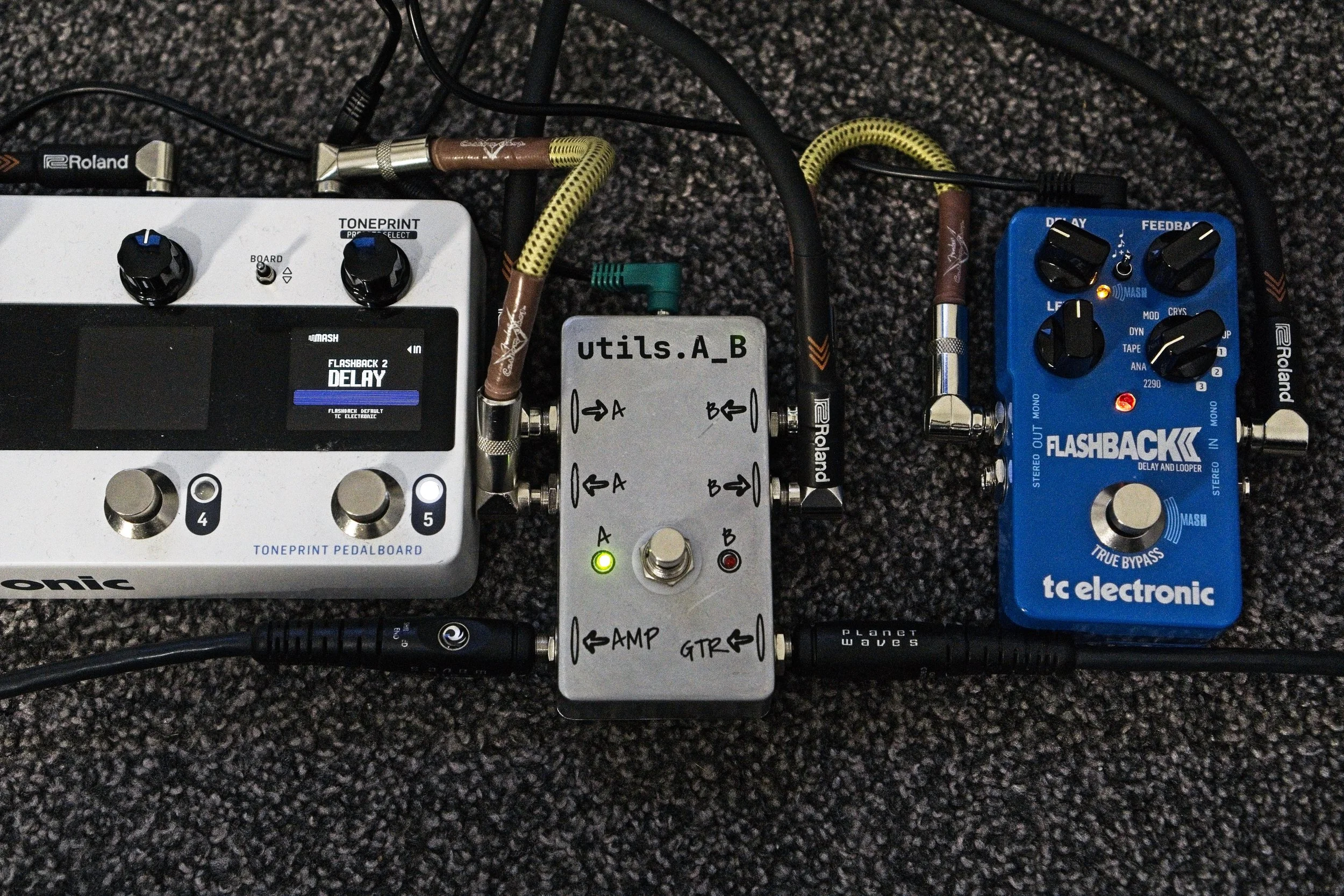TC Electronic Plethora X3 & X5
Fifteen pedals for the price of three.
- Effects loop
- Expression pedal
- Build quality
- Expensive
- Compact
- Build quality
- No effects loop
TC Electronic make some of the best digital effects pedals in their price range. Their Flashback Delay and Hall of Fame Reverb are highly regarded for offering unmatched tone and versatility. The Plethora multi-effects processors by TC Electronic let you use any combination of their TonePrint pedals together.
Features
Both the X3 and X5 follow a very simple formula. You get 3 or 5 pedal slots respectively and can assign each slot to any TC pedal you want. TC Electronic constantly add new effects and features to the Plethora range. This is what’s available right now (version 1.3):
Corona Chorus
Hypergravity Compressor
Flashback 2 Delay
Hall Of Fame 2 Reverb
Mimiq Doubler
Vortex Flanger
Quintessence Harmoniser
Sentry Noise Gate
Sub n’ Up Octaver
Helix Phaser
Brainwaves Pitch Shifter
Pipeline Tap Tremolo
Viscous Vibe
Shaker Vibrato
Alter Ego Tape Echo
Looper
This should cover all the digital effects you could ever want, ready to be paired with your favourite overdrive pedals. The effects do not have to be unique, you can use 5 delays in a row if you want.
The basic premise is very simple. In Play mode, each footswitch will control the assigned pedals. In Edit mode, you activate a slot with its corresponding footswitch and edit its effect and parameters. There is no “saving”. Whatever you set is saved and persists immediately.
The TonePrint knob can be a bit confusing. Not only does it control the various TonePrint options available on each individual pedal, but it also covers the additional switches found on TC pedals. For example, the original Flashback has a note subdivision switch (quarter note, dotted eighth and quarter note + dotted eighth). On the Plethora, you would have a TonePrint option for each of the delay tones and subdivisions, such as “ANA 4+8.”, “CRYS 8.”, etc. Similarly, there are only three parameter knobs, while some of the original TC pedals have four. The way they get around that is that, depending on the TonePrint, a knob can control multiple parameters at once. This can be further tweaked in the settings and will take a while to get used to.
You can have up to 127 different boards on both the X3 and X5. There is a toggle switch to cycle through them, or you can press two rightmost foot switches simultaneously to go up a memory slot, and two leftmost switches to go down one. There are a few other ways you can configure this in settings, such as triple-tapping certain foot switches.
All the footswitches are pressure sensitive and have the same “Mash” features as the original pedals the effects are based on. This can be configured in the settings for each effect slot for each board separately. For example, pressing and holding down the footswitch can engage tap tempo on a Flashback delay or set reverb time to infinity on a Hall of Fame. It is almost like having a separate expression pedal for each effect slot.
Updating the latest firmware is very simple. Connecting the Plethora to your computer via USB will let you copy files to it like a flash drive. You just download the latest version from the TC Electronic website and copy it onto device storage. Reboot the Plethora and it will auto-update.
Both Plethora pedals have an easily accessible tuner built in. They can be configured to be true bypass when all effects are off, or you can leave it in buffered bypass mode by default. Both pedals support stereo inputs and outputs. The effects can be displayed either left to right or right to left (configurable global in settings). There is also computer software, so you can set up your boards and presets via USB, but TC Electronic have done a very good job making everything easily accessible directly on the unit. The effects can also be controlled via MIDI. According to the manual, it requires 600mA of current to power, but I’ve been running it without any issues from a 500mA power supply.
Plethora X3 vs X5
The main difference is that the X5 has five effects slots and the X3 has only three. If you just want a delay, reverb and a wildcard pedal that changes depending on the song, the X3 will do the job while being cheaper and more compact. If you need more than three effects simultaneously, X5 will do the job.
Furthermore, the X5 has an effects loop that you can configure to be anywhere in the chain. If you want to start with a compressor, then add some overdrive in the effects loop, followed by time-based effects, the X5 is your only option. On the Plethora X3, all three effects have to run one after the other.
Another advantage of the X5 is expression pedal support. The expression pedal can be configured to control almost any combination of parameters on a board. Fortunately for the X3, the Mash footswitches can accomplish a similar level of versatility.
Maybe an even cheaper and smaller Plethora X1 or X2 is coming soon?
Sound
Both versions of the Plethora sound incredible. The delays and reverbs in particular are as good as anything else out there. The pitch shifters track very well and can easily handle chords as well as single notes. Some people have voiced concerns that unlike with the standalone pedals, both the dry and wet signals pass through the digital converter, rather than blending an analog dry signal with a digital wet signal. You can rest easy. I have the Flashback 2 as well as the Sub n’ Up, and comparing them side by side to the Plethora, they sound identical.
Build Quality
TC Electronic are known for making high-quality durable pedals at affordable prices and the Plethora are no exception. The screens are bright and legible and the knobs and foot switches are sturdy, yet smooth.
Bottom Line
It’s hard to fault the Plethora pedals, when they provide thousands of pounds worth of effects in a compact, easy-to-use package with excellent build and sound quality. If you would like to replace a few time-based and modulation pedals on your board with a single, reliable unit, the Plethora is for you. The only problem is that compact modelling units like the Boss GT-1000CORE and Line 6 HX Stomp and POD GO can do all the same effects and features, while also adding overdrive, amp simulation and parallel signal paths. Given the power and flexibility of competing units, the price of the Plethora pedals is just a bit too high.






